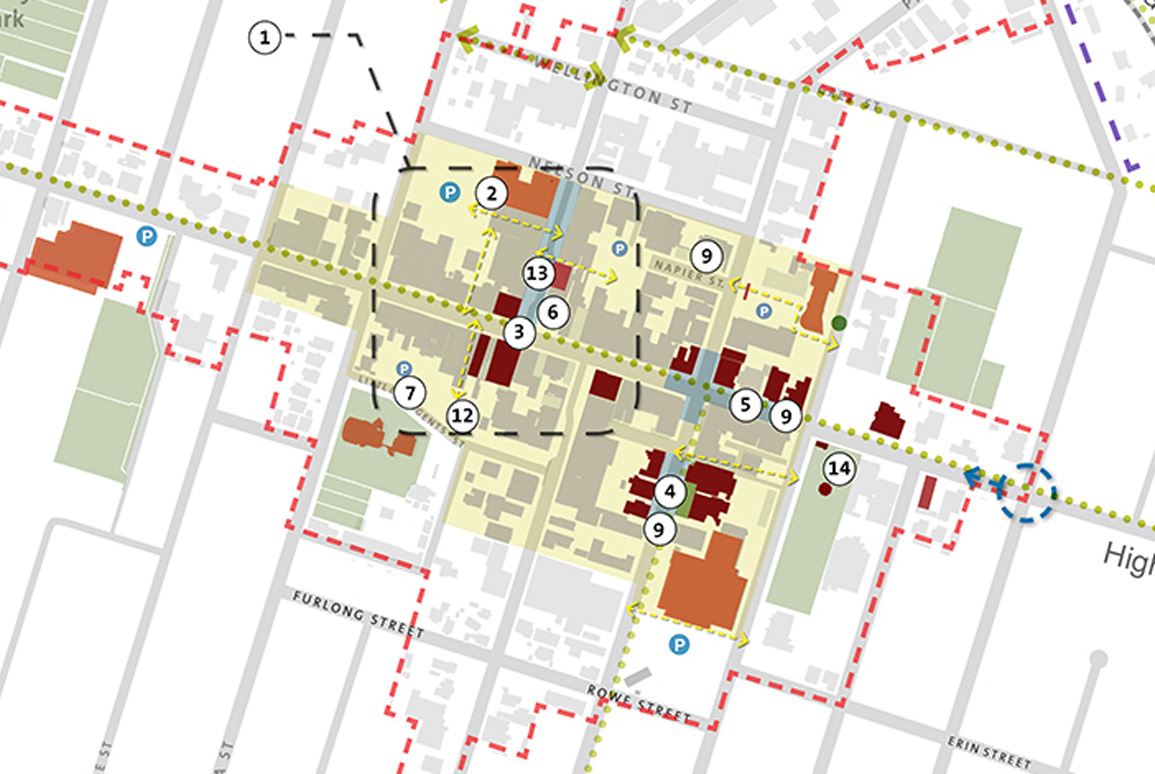Be Bold: Lessons learned from our work in Small Towns
21 May 2020
Call them ‘small towns’ or ‘regional centres’ — these quiet communities dotted across the country hold a wealth of New Zealand’s history and character. But their populations and economies are shrinking.

As the nation’s economy moved from an agricultural output to a more service- and tourism-based model, and the subsequent urban migration of the population; many of these once-vibrant outposts eased into a half-asleep state of genteel preservation, while some eroded into pitiable decay.
But that’s to be expected. All the jobs are in the cities, right?
Maybe so, a decade ago.
The past two months have shown that for many Kiwis, productively working from home is not only possible, it’s enjoyable; provided there’s the digital infrastructure to make it happen. That means the idea that “all the jobs are in the city” no longer applies to many industries.
If that’s the case — and bearing in mind the greater affordability of housing outside of the larger urban centres — why are people still leaving these small towns?
Because sometimes, to quote author Gertrude Stein: “There is no THERE there.”
Even if every far-flung corner of Aotearoa was connected with 5G, for a small town to be viable it needs ‘something’ that draws residents out of the house and on to the High Street. And if that certain-something also attracts visitors, even better.
How can small town centres effectively reinvent themselves and become sustainable and resilient? Here’s what we’ve learned:
Lesson #1) Find the ‘something special’ and celebrate it
There is a reason for every town — or there once was. Be bold about reflecting and taking pride in that. The something special could be a rich agricultural heritage; it could be the town’s origins as a trading port, or deep cultural connections for mana whenua. Maybe it is proximity to tourism attractors, a beautiful landscape, or a rural lifestyle opportunity within an hour’s drive to a larger regional centre. Whatever it is — that point of difference is what will both keep and draw people.
Lesson #2) Engage and Communicate
For decades, ‘community engagement’ consisted of The Powers That Be making decisions, and only informing the community when the plan was a done-deal. It didn’t work then, and it won’t work now. External consultants may bring fresh eyes and perhaps a broader understanding of the design-based possibilities of a long-neglected Main Street, but local stakeholders have the knowledge and history. Pull opinions together and find consensus. There will be bumps in the road. Keep talking and solve problems together.
Lesson #3) Think different, but listen
As landscape architects and urban designers, our job is to present achievable options. Maybe a painfully average building should be torn down and replaced with a pocket park or a flexible public space. Let’s think about widening footpaths and encouraging pedestrianisation. How about adding a co-lab working space on the local high street so people working from home can host a meeting or access office support infrastructure?
But, be mindful: small towns are not miniature cities, and we must not think of them that way, particularly in relation to housing typologies. Medium-density in Wellington might be a three-level mixed-use building, adjacent to public transport; in the Wairarapa medium-density is at minimum a 500m² section.
Lesson #4) Create a catalyst
Once you’ve got buy-in, determine the best thing to do first, and do it. Keeping a large supermarket in the centre of town, rather than on the outskirts, might re-energise the retail establishment and bring in investment. Building a playground and enhancing existing recreation opportunities could be the idea most-embraced by residents. Enthusiasm and inspiration are generated by that first big decision that informs the vision of the project.
Lesson #5) Leverage partnerships
The greatest success comes when the public and private sector, and the community, come together behind a shared vision. Find ways to bring the whole community together on all levels. Using local contractors and vendors wherever possible makes everyone part of the team — and brings economic benefit during the project, not just after. A donor wall is a tangible way to acknowledge those who have contributed to the project in myriad ways. Council-run events like planting days and celebrating small milestones along the project timeline will keep the community on board with the progress made.
While data shows that small towns continue to shrink in population, and remaining residents tend to be older, we’ve all heard stories or know people who have moved out of the city and achieved that live-work-play balance to which we all aspire.
Are these anecdotes the exceptions that prove the rule? For now, largely yes.
It’s too soon to tell whether our new appreciation for a slower pace of life and the joys of our own backyard will change that trend in the immediate future.
But some of our experiences during the lockdown period have added a new layer of understanding. And perhaps, showed us even greater opportunities that exist for those small towns that are willing to be bold.

